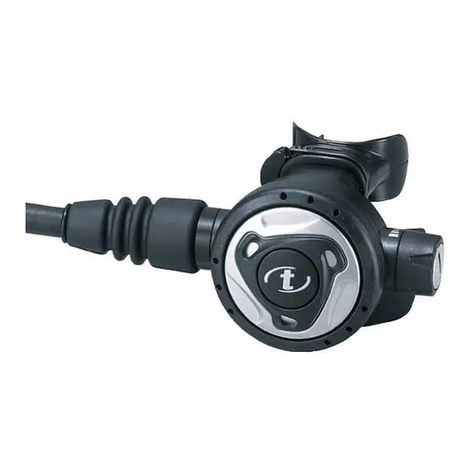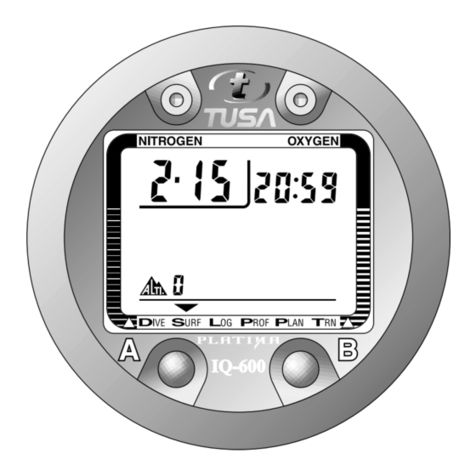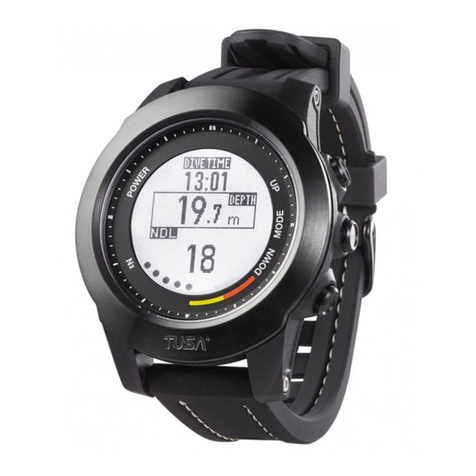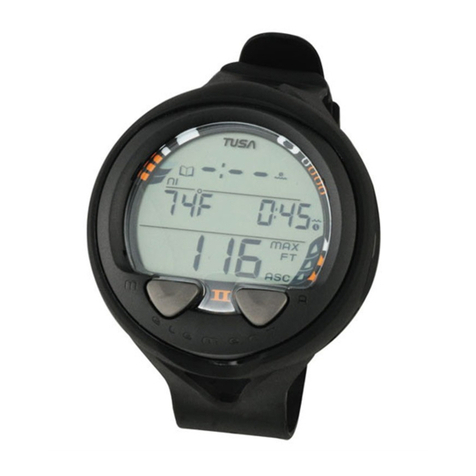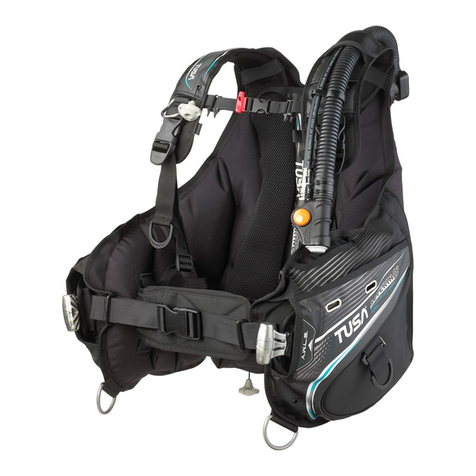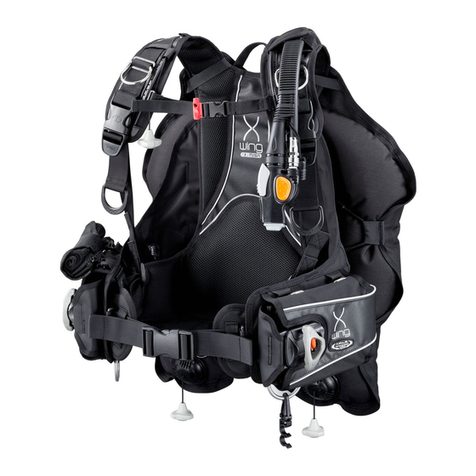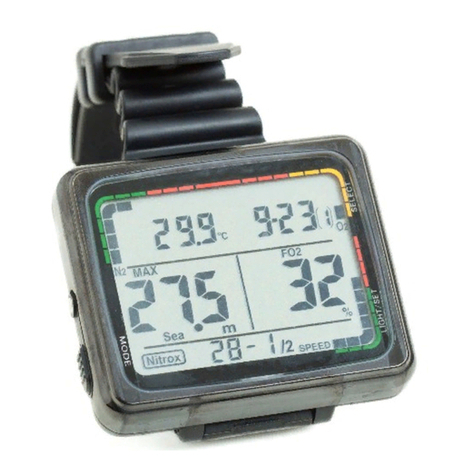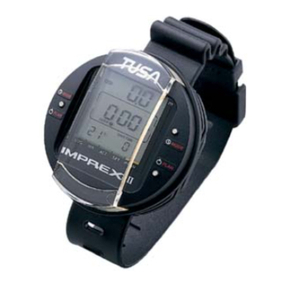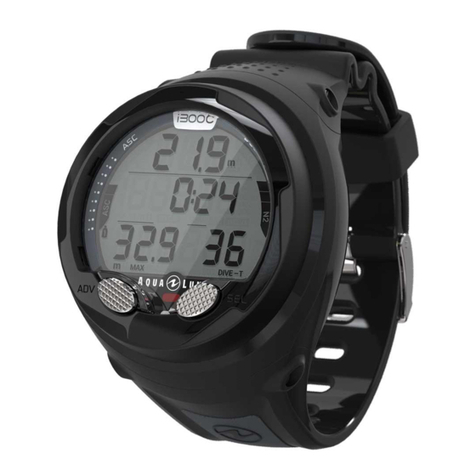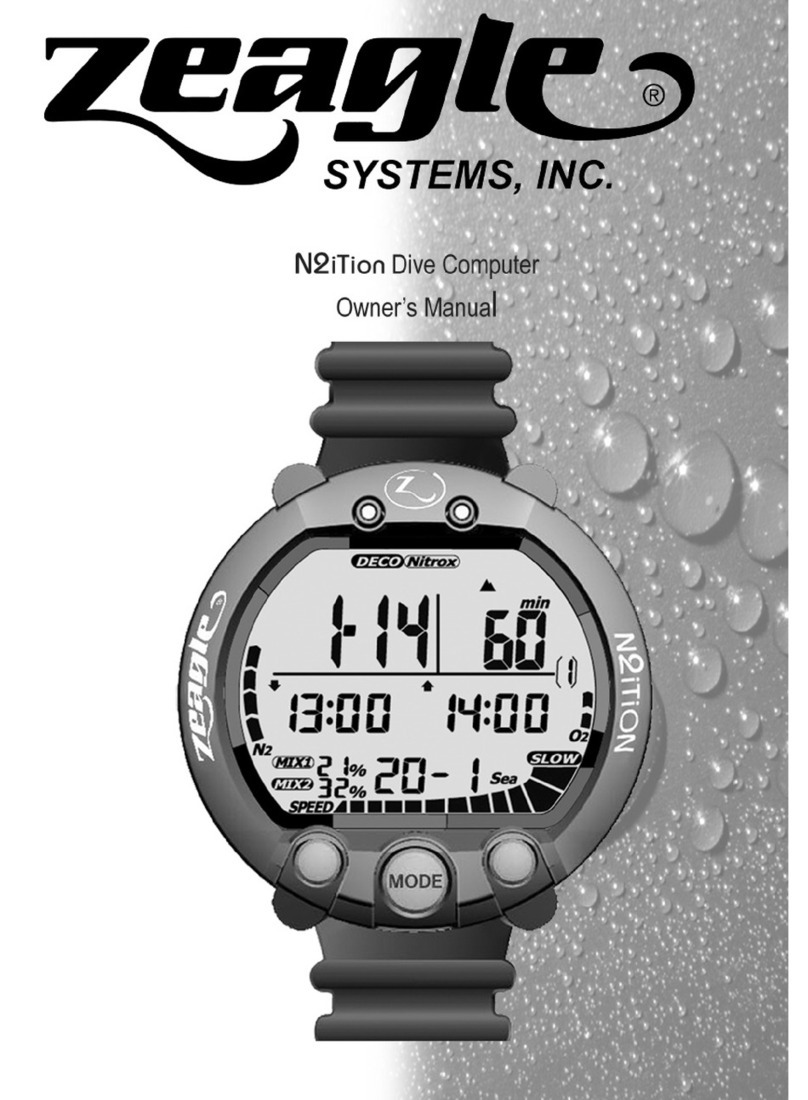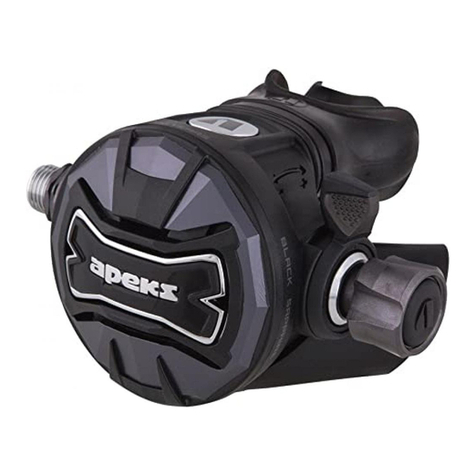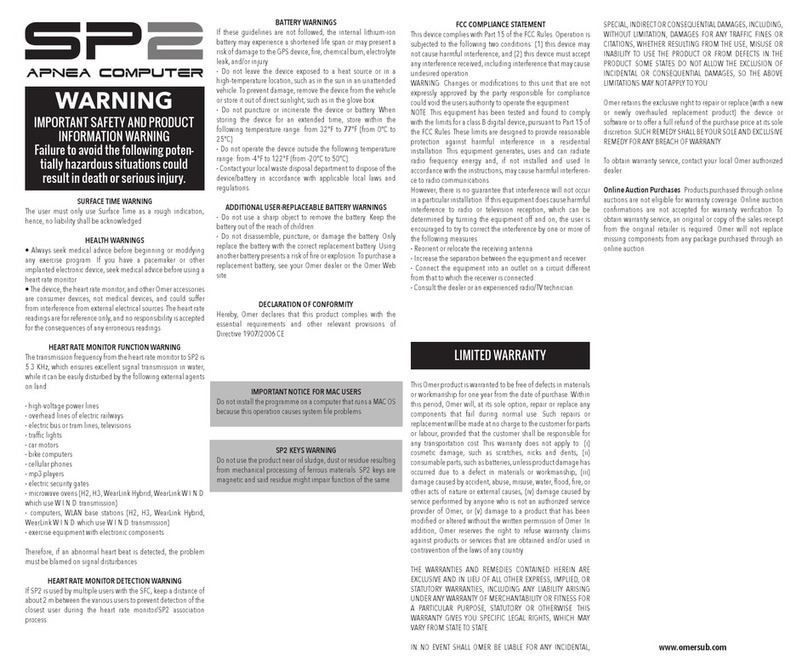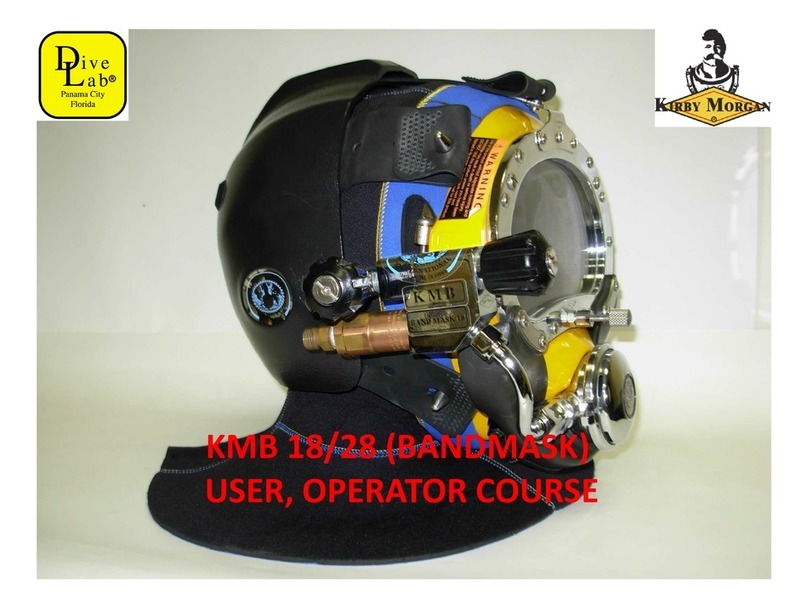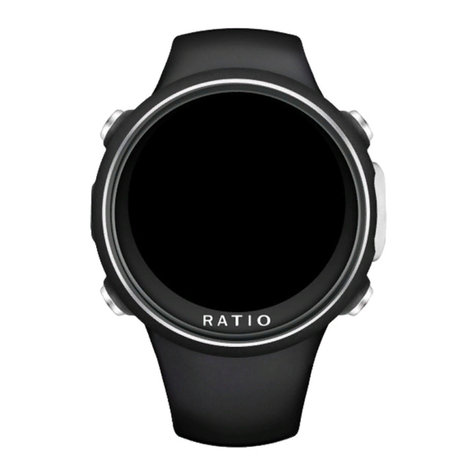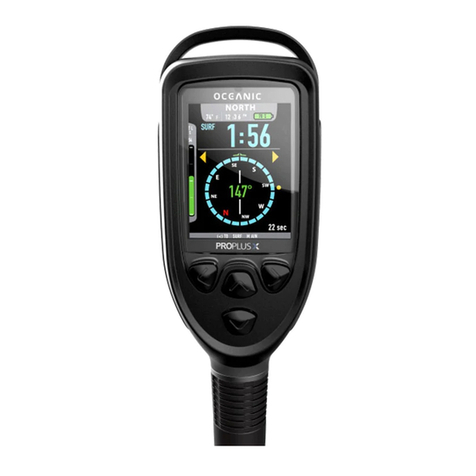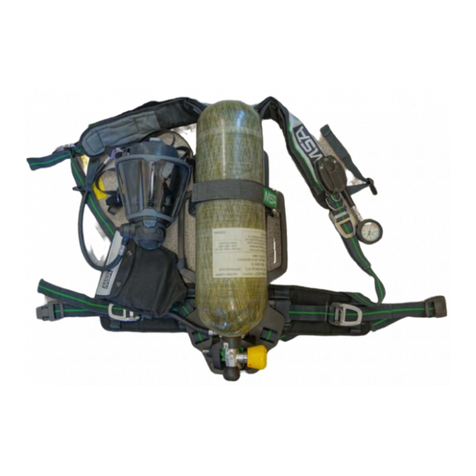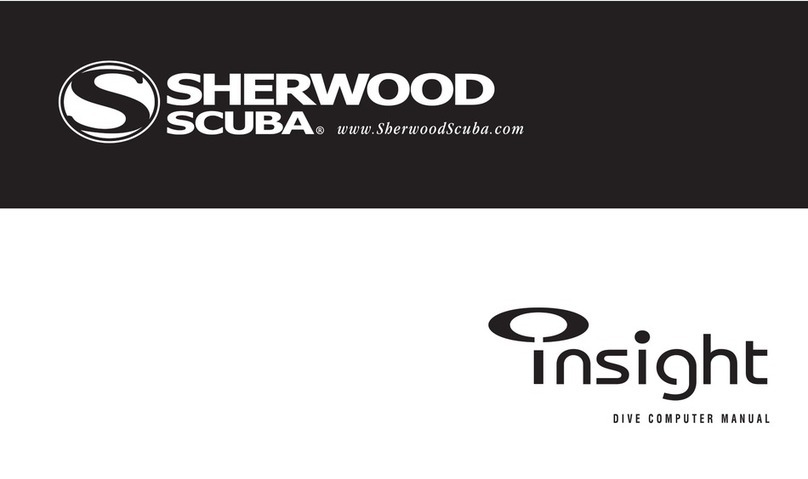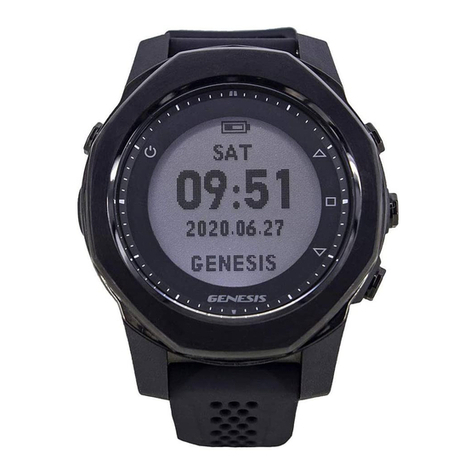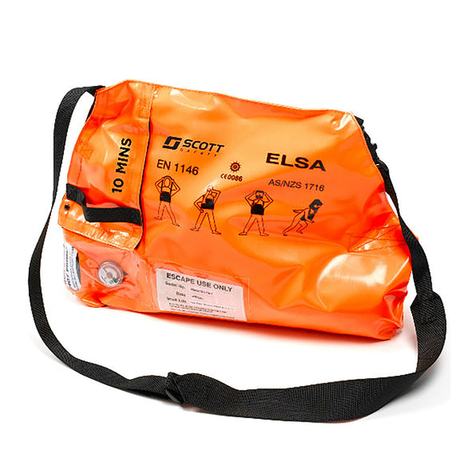
9
The IQ-850 is designed for use by certied, recreational divers
who have maintained a sufcient level of knowledge and skill
prociency through a combination of formal training, ongoing study
and experience. It is not intended for use by persons who lack
the qualications, and thus may not be able to identify, assess,
and manage the risks scuba diving entails. Use of the IQ-850 in
conjunction with Enriched Air Nitrox (EANx) further requires that the
diver be trained and certied for Nitrox diving.
The IQ-850 is not intended for use by commercial, military or
technical divers whose activities may take them beyond the
commonly accepted depth limits for recreational diving.
The IQ-850 is designed for use by divers breathing either normal
compressed air or Enriched Air Nitrox (EANx) mixtures whose fraction
of Oxygen falls within a range of 22 to 99 percent.
Although the IQ-850 is capable of calculating decompression stop
requirements, this ability is provided as a safety feature only, should
a diver accidentally exceed the No-Decompression Limits (NDLs).
Dives requiring mandatory stage decompression carry substantially
greater risk than dives made well within no-decompression limits.
Decompression diving is widely believed to entail substantially
greater risk of decompression illness than dives made well within
the No-Decompression Limits (NDL). The IQ-850 provides
decompression stop information solely as a contingency in case
divers accidentally exceed the No-Decompression Limits. It is not
designed or intended for use as a tool to plan or execute dives
that participants know will entail mandatory decompression.
WARNINGS
Before using the IQ-850, it is extremely important you read the
following points as well as similar warning and caution notices
that appear throughout this manual. Failure to do so could result
in damage to or loss of equipment, serious personal injury, or
death.


